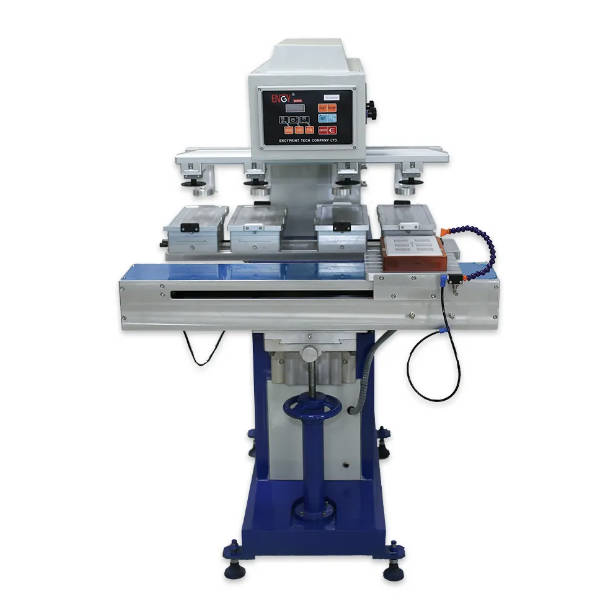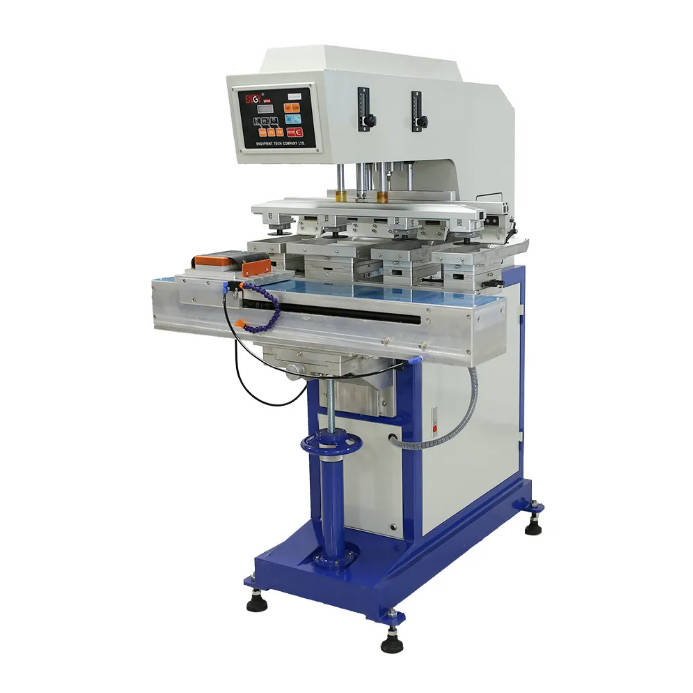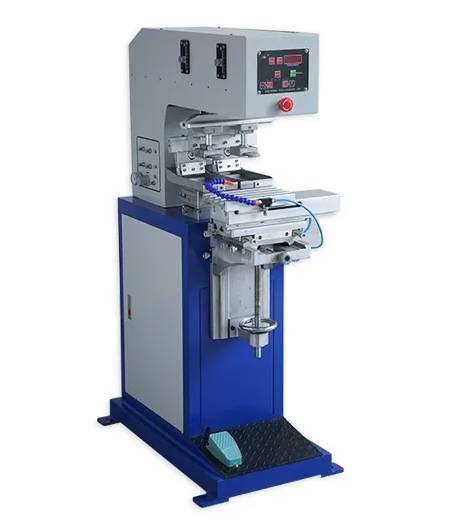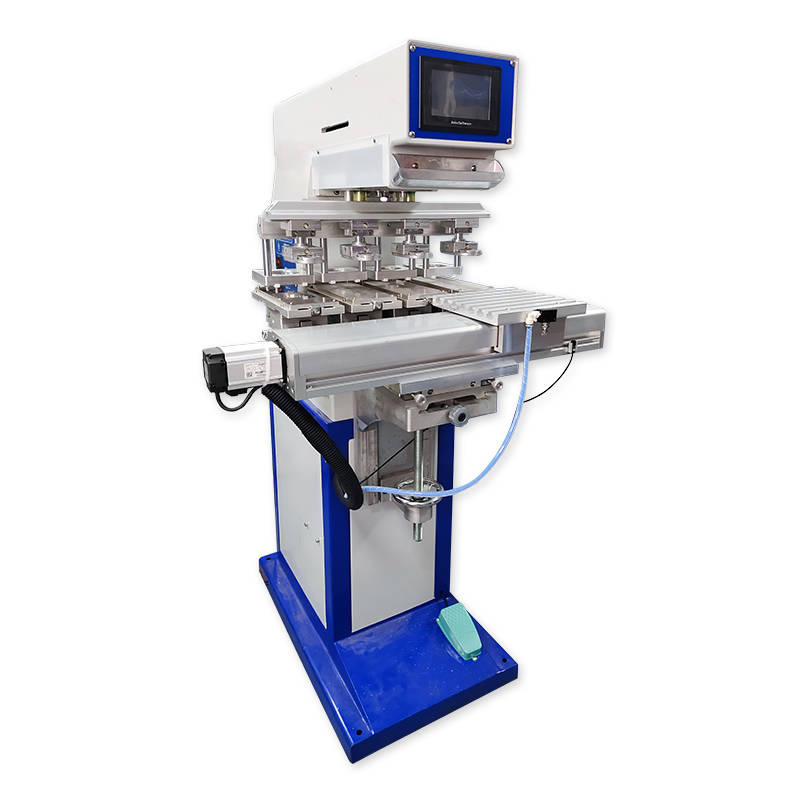Introduction
Pad printing is a versatile printing technique widely used in industries such as automotive, electronics, and promotional products. A crucial component of any pad printing machine is the pad itself, responsible for transferring the ink from the plate to the product’s surface.
Over time, even the most durable pads require replacement to maintain the quality and efficiency of your pad printing equipment. This article explores the telltale signs that your pad needs replacing and provides insights for buyers of pad printers on how to ensure their operations run smoothly.

1. Understanding the Role of the Pad in Pad Printing
The pad is the centerpiece of any pad printer, acting as a flexible tool that conforms to the contours of the surface being printed. Made typically from silicone rubber, these pads are designed to endure repeated use while maintaining ink transfer efficiency.
The shape, hardness, and material of the pad significantly affect print quality. Whether you’re using a manual machine or an advanced automatic pad printing machine, ensuring the pad’s condition is optimal is critical for consistent results. Without proper maintenance and timely replacement, even the best pad printing supplies cannot prevent a decline in performance.
2. Signs That Indicate It’s Time to Replace the Pad
Understanding when to replace your pad can save you from production delays and subpar results. Look for these common signs:
- Wear and Tear:
Pads that show visible cracks, dents, or deformations are no longer suitable for accurate printing. Over time, repeated cycles on pad printing equipment can compromise the pad’s surface, reducing its ability to hold and transfer ink properly. - Decreased Print Quality:
When prints appear blurry, faded, or incomplete, the pad might not be applying consistent pressure. Automatic pad printing machines rely heavily on precision, and a worn pad disrupts this balance. - Ink Transfer Issues:
If the pad leaves ink behind or struggles to pick up ink uniformly, it’s a clear signal that its elasticity has degraded. This can affect the efficiency of even the most sophisticated pad printer. - Loss of Shape or Hardness:
Pads that have become too soft or have lost their shape can no longer conform to irregular surfaces, leading to inconsistent prints. For operations requiring high precision, such as medical or electronic products, this is unacceptable.
3. Factors That Affect Pad Longevity
Several variables can influence how often you need to replace your pads:
- Frequency of Use:
High-volume production increases wear on pads, especially when running an automatic pad printing machine continuously. - Type of Ink Used:
Aggressive or abrasive inks can accelerate pad degradation. Ensuring compatibility between inks and pads is a key aspect of selecting the right pad printing supplies. - Surface Characteristics of Printed Items:
Rough or irregular surfaces put additional stress on the pad, shortening its lifespan. Using a pad printer for delicate surfaces, on the other hand, often results in slower wear. - Maintenance Practices:
Proper cleaning and handling can significantly extend the life of your pad. Neglecting maintenance can lead to premature damage, even on robust pads designed for heavy-duty pad printing equipment.
4. Maintenance Tips to Extend the Life of a Pad
While pads will eventually wear out, proper maintenance can help you maximize their lifespan and save costs in the long run. Here are some practical tips:
- Regular Cleaning:
Use gentle solvents and a lint-free cloth to clean pads after each use. This prevents ink residue buildup, which can compromise the pad’s surface and performance. Cleaning is essential whether you’re using a manual pad printer or a high-speed automatic pad printing machine. - Proper Storage:
Store pads in a cool, dry place, away from direct sunlight or extreme temperatures. Silicone materials can degrade under poor storage conditions, affecting their elasticity and durability. - Rotate Pads:
If you operate multiple pad printing machines or frequently switch between jobs, rotating your pads ensures even wear. This practice is particularly beneficial for businesses using large-scale automatic pad printing equipment. - Use Compatible Cleaning Agents:
Avoid harsh chemicals that can damage the pad’s surface. Always choose cleaning agents recommended by your pad printing supplies provider to maintain material integrity.
5. How to Choose Replacement Pads
Selecting the right replacement pad is crucial for maintaining high-quality prints. Consider the following factors:
- Shape and Size Compatibility:
Pads come in various shapes and sizes to match specific printing requirements. Whether you’re working with an automatic pad printer or a different model, ensure the replacement pad fits your machine and application. - Material and Hardness:
Different jobs require pads with varying levels of hardness. Softer pads are ideal for delicate surfaces, while harder pads handle high-detail prints better. Consult your pad printing supplies provider to find the right match for your project. - Manufacturer Recommendations:
Stick to pads recommended by your pad printer’s manufacturer. Trusted brands often provide pads optimized for their equipment, ensuring consistent performance. - Quality Over Price:
Investing in high-quality pads may seem expensive upfront, but they offer better durability and performance, reducing downtime and replacement frequency. This is particularly important for businesses relying on advanced pad printing equipment for high-volume production.
6. Conclusion
Recognizing when to replace your pad is essential for maintaining the efficiency and print quality of your pad printing machine. By understanding the signs of wear, practicing proper maintenance, and choosing the right replacement pads, you can keep your operations running smoothly.
Whether you’re using a manual setup or a cutting-edge automatic pad printing machine , timely pad replacement is a small step that makes a significant difference. Investing in high-quality pad printing supplies and following best practices will ensure consistent, professional results for your business.
For those considering purchasing a pad printer, remember that ongoing maintenance and proper pad selection are just as important as the machine itself. Choose wisely, and your pad printing equipment will deliver excellent performance for years to come.





